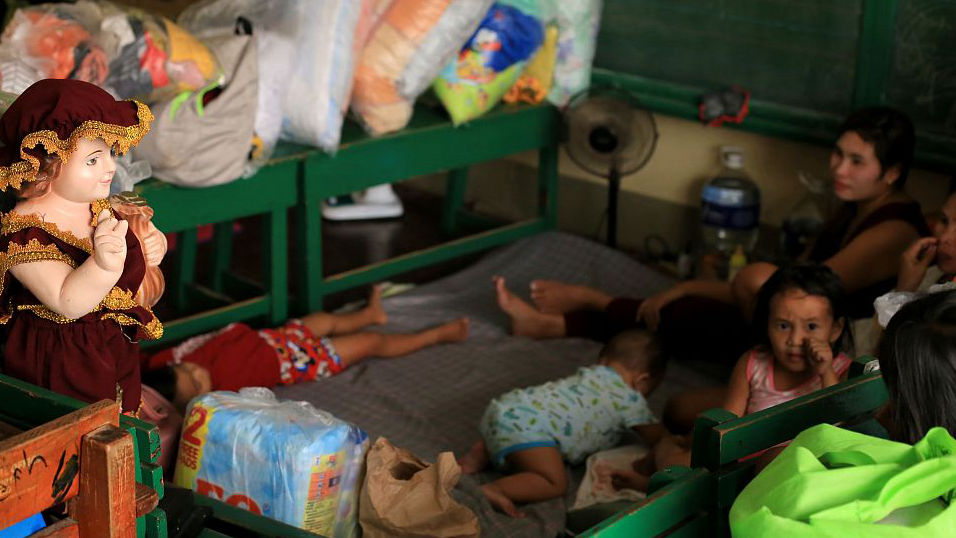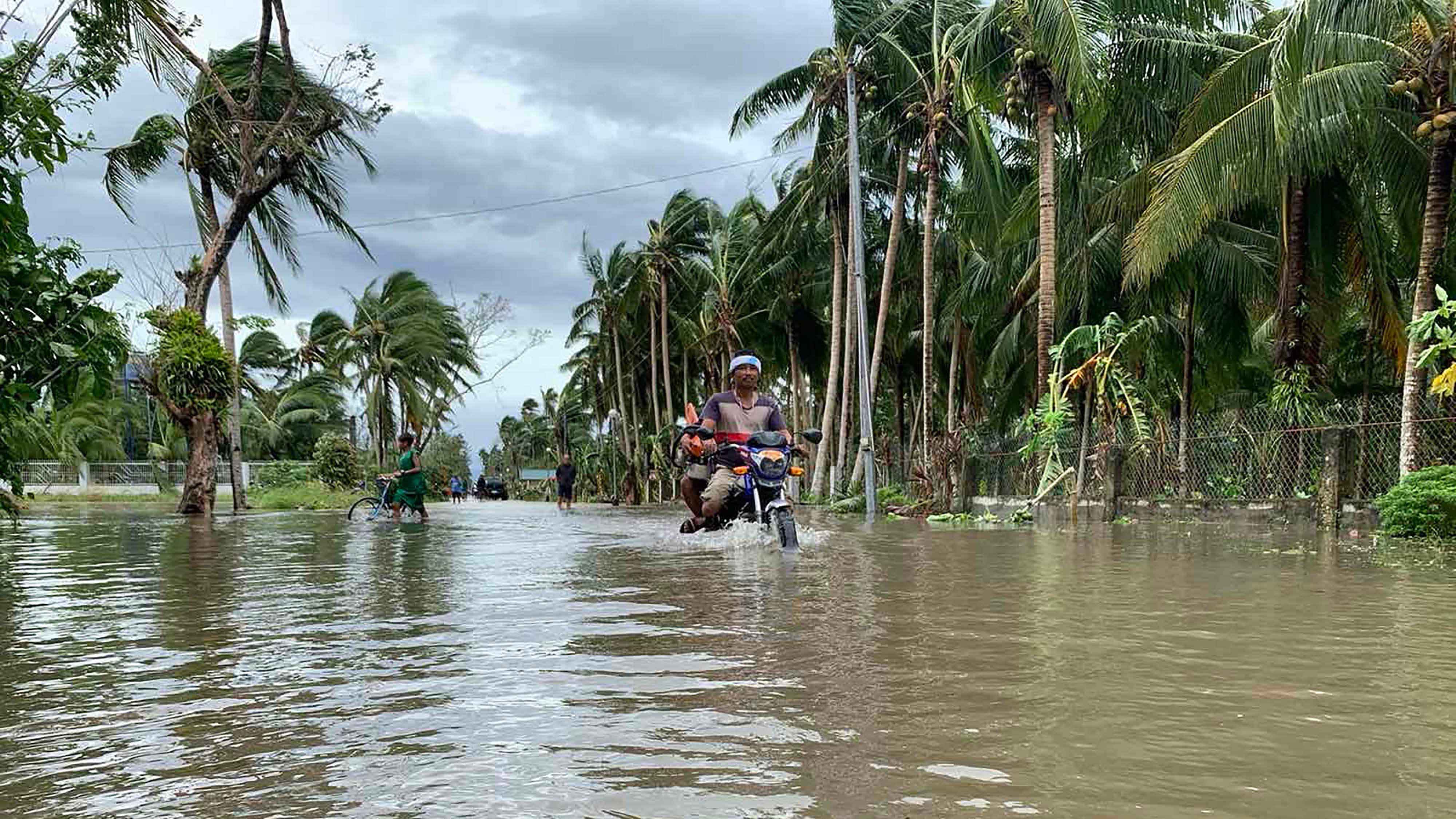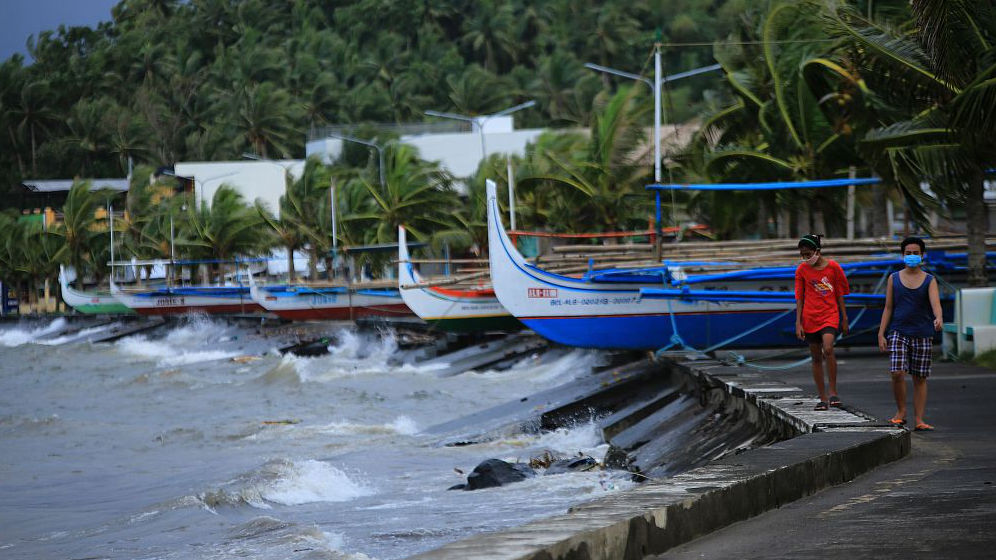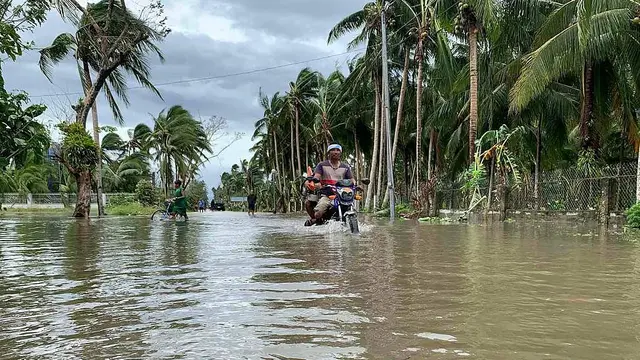
A woman and her children live in a temporary shelter in Legazpi, Albay, Philippines, October 31, 2020. /CFP
Super Typhoon Goni, the strongest typhoon to batter the Philippines this year, made landfall in Bicol, the southernmost region of the country's main island of Luzon, early on Sunday morning, the state weather bureau said.
The Philippine Atmospheric, Geophysical and Astronomical Services Administration (PAGASA) said Goni, which intensified into a super typhoon at 2 a.m., was blowing maximum sustained winds of 225 kilometers per hour and gustiness of up to 280 kilometers per hour when it slammed into Bato town in Catanduanes, an island province in the southeastern part of Luzon, at around 4:50 a.m.
There are no immediate reports of damage or casualties. Nearly a million people have been evacuated from their homes in Bicol region.
Over the next 12 hours, "catastrophic violent winds and intense to torrential rainfall" would be experienced in the Bicol region, which covers the southern end of the main island of Luzon and Catanduanes, according to PAGASA.
00:35

Goni, which intensified into a "super" typhoon as it neared the Philippines, comes a week after Typhoon Molave hit the same region, killing at least 22 people.
"Storm surges are imminent on our east coast. We are monitoring Mayon and Taal volcanoes for possible volcanic mud flows," said Mark Timbal, spokesman for the National Disaster Risk Reduction and Management Council.
Authorities spent Saturday marshaling rescue vehicles, emergency response teams and relief goods before the storm's arrival.
COVID-19 pandemic complicates evacuations
Preparations have been made complicated by the COVID-19 pandemic, which has already caused 380,729 infections and 7,221 deaths in the Philippines.
"Evacuating people is more difficult at this time because of COVID-19," said Alexis Naz,spokesman for regional civil defense in Bicol.
Hundreds of people have been left stranded after the coastguard ordered ferries and fishing boats into port in expectation of rough seas throwing up 16-meter waves.

Residents walk past parked wooden boats along a boulevard in Legazpi, Albay, the Philippines, October 31, 2020. /AFP
Ports and airports were shut, and schools, gyms and government-run evacuation centers were being used for emergency shelters.
Relief goods, heavy machinery and personal protective equipment were being moved into areas of need, but a local mayor in Quezon Province said the pandemic had depleted their funds for disaster emergencies.
Goni is expected to weaken as it crosses southern Luzon and enters the South China Sea early Monday, according to the state forecaster.
The Philippines is hit by an average of 20 storms and typhoons every year, which typically wipe out harvests, homes and infrastructure, keeping millions of people perennially poor.
Its deadliest on record was Super Typhoon Haiyan, which unleashed giant waves on the central city of Tacloban and left more than 7,300 people dead or missing in 2013.
(With input from agencies)
 简体中文
简体中文

